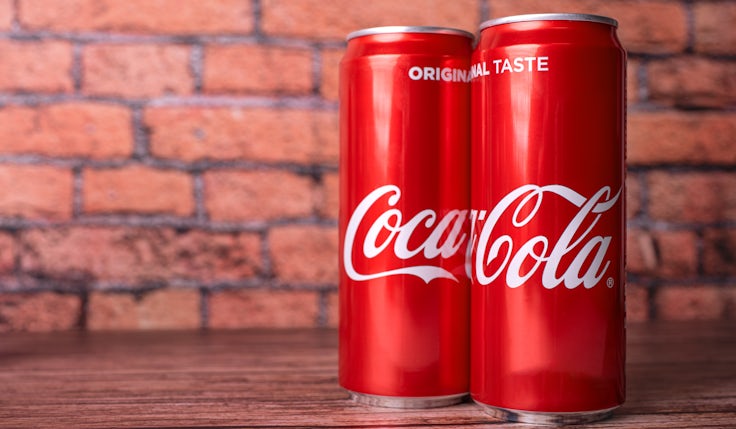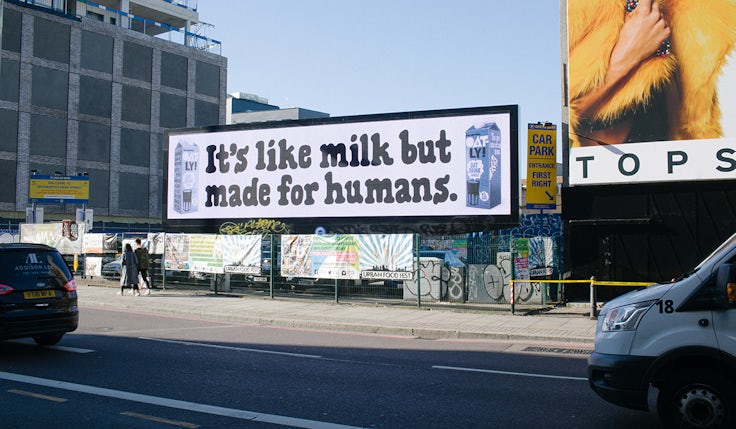‘A bet for the future’: Zero Sugar’s role in driving growth for Coca-Cola
Coke Zero Sugar provides an opportunity for the trademark brand to reach a new set of consumers and provides existing drinkers with the choice to enjoy the product over more occasions, says senior director of global strategy, Oana Vlad.
Coca-Cola first introduced a zero sugar version of its trademark Coke in 2005, almost 20 years on, Coca-Cola Zero Sugar is acting as a major growth driver for the brand.
This is a growth that Coca-Cola is fuelling through an emphasis on Zero Sugar’s taste through its ‘Best Coke Ever?’ platform, the latest iteration of which was launched earlier this month.
Coca-Cola Zero Sugar is significantly younger than Diet Coke, which was first unveiled in 1982. Unlike Diet Coke, which is described as having a “lighter taste”, Coca-Cola Zero Sugar is designed to look and taste like Coca-Cola original.
Alongside, the original taste product, Coke Zero is one of “two engines of growth” for trademark Coca-Cola, senior director of global strategy, Oana Vlad, tells Marketing Week.
It is growing faster than the Coca-Cola Company’s total portfolio. Coca-Cola Zero Sugar grew its volume sales by 5% in 2023, which is over double the rate of growth the business’s total portfolio saw, which was 2%.
In the UK, no and low-calorie drinks made up almost two-thirds of fizzy drink sales in 2022, according to the British Soft Drink Association, meaning that Coke Zero Sugar can tap into significant demand in this market.
Coca-Cola Zero Sugar helps the Coke trademark grow by offering consumers a choice, says Vlad.
“Coke Zero Sugar specifically plays a dual role, it does reach a completely different and unique set of people that original taste doesn’t, which is great. But it also can serve as a choice for an existing Coke original taste drinker that might rotate between the two,” she says.
She describes Coke Zero as “a bet for the future” for the business.
As a zero sugar, zero calorie drink, Coke Zero can provide a choice for original Coke drinkers wanting to moderate on occasion. The key term for the strategy of the Coca-Cola Company is choice, says Vlad.
The focus for Coke Zero Sugar regardless of year, regardless of campaign since its launch in 2005 has been taste.
Oana Vlad, Coca-Cola Company
“For us on Coke in general, our objective is choice. We are not proactively trying to make a decision for people, we want people to make the decision of what is right for them.”
“This is not a transition strategy from original taste to zero sugar,” she adds.
Therefore, the business sees this as dual drivers of growth, rather than one competing with each other, she says.
The growth of Coca-Cola Zero Sugar is crucial to the growth of trademark Coke as a whole. Vlad says the company is focusing on taste to drive this growth.
“The focus for Coke Zero Sugar regardless of year, regardless of campaign since its launch in 2005 has been taste,” she says.
Coca-Cola Zero Sugar was reformulated in 2021. Following this, the business launched its ‘Best Coke Ever?’ brand platform, which Vlad describes as a “chapter in a journey that has been really consistent”, in that it has always been focused on taste.
Coca-Cola CEO: Innovation is serving as a ‘competitive advantage’
Best Coke Ever? is aimed at driving trial, with the business confident that consumers will love the taste of Coke Zero once they taste it.
Like others platforms launched by Coca-Cola, such as ‘Real Magic’, Best Coke Ever? is designed with “breadth” so that it can be activated time after time.
The platform is designed as an “invitation for [consumers] to decide” whether Coke Zero really is “the best ever”, says Vlad. The brand has looked to inspire debate and to allow consumers to “decide for themselves”, she says.
Its primary aim is to drive trial, reach new consumers and expand the drinker base, Vlad says, with the idea that the invitation for consumers to decide through the platform may encourage trial.
Continuing the momentum
Earlier this month, the latest iteration of the Best Coke Ever? platform was launched. This time, the brand reignited the debate through a digital-led execution.
Vlad says that for this iteration, Coca-Cola wanted to make sure product was front and centre.
“The main decision was that we wanted to give the product a voice so that was the guiding principle and then we wanted to find all the right tools and the right vehicles that allow us to do that in a really fresh and unique way,” she says.
What that meant in practice was a new typography created through a combination of artificial intelligence and human design. The typography is generated by an algorithm that detects letters in the bubbles and fizz of Coke Zero and generates words and messages. In this way, the product is given a “voice”, says Vlad.
We’re really happy with the momentum that we’re seeing on Coke Zero Sugar. It’s a bet for us for the future.
Oana Vlad, Coca-Cola Company
Consumers will also be able to interact with the product on TikTok, via a filter that allows them to turn their own faces into Coke Zero bottles.
While these parts of the campaign push forward Coke Zero’s digital presence and use technologies and platforms like AI and TikTok, Vlad says the brand’s approach is always to combine the digital and the physical to drive trial.
In this case, the brand is using QR code-activated vending machines, aimed at driving a “massive” sampling effort.
Having delivered 5% volume growth in 2023, Vlad is confident that Coke Zero can continue its growth this year.
“We’re really happy with the momentum that we’re seeing on Coke Zero Sugar. It’s a bet for us for the future,” Vlad states.






